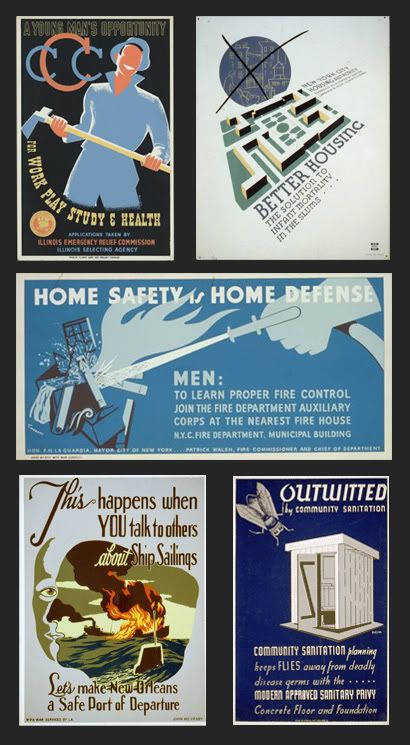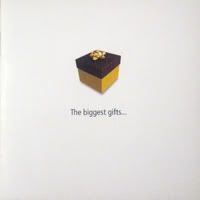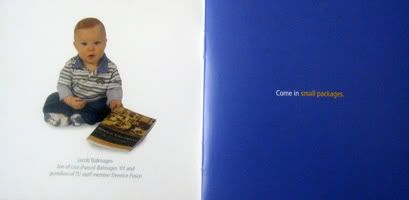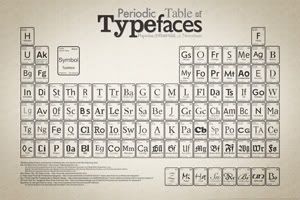This week's show and tell was a group project. It's an epic narrative told entirely in paper and paste. Prepare to get your socks rocked.
Sunday, October 31, 2010
Friday, October 29, 2010
Sense and ... Sensibleness?
The editors among us might appreciate this piece that aired on NPR yesterday. New evidence suggests that English novelist Jane Austen—long praised for her meticulously polished style—might not have acted alone. It seems she owes some of her success to a very attentive editor who spit-shined her prose to its signature cordovan gleam.
From the story:
Editing can be a pretty transparent trade. Two hundred years seems like a long time, but I think I speak for the editors everywhere when I say we should all be so lucky.
(While I'm on the subject of Austen, and in the spirit of Halloween ... has anyone read Pride and Prejudice and Zombies?)
From the story:
The beloved novelist—author of Sense and Sensibility, Pride and Prejudice, Mansfield Park and Emma—is known for her polished prose, her careful phrasing and her precise grammar. "Everything came finished from her pen," Austen's brother, Henry, said in 1818, a year after his sister's death
But now—though it may pain die-hard Austen fans—it turns out that Austen may have simply had a very good editor. Kathryn Sutherland, a professor at Oxford University, has been studying more than 1,000 original handwritten pages of Austen's prose. She's found some telling differences between the handwritten pages and Austen's finished works—including terrible spelling, grammatical errors and poor (often nonexistent) punctuation.
 |
| Original Austen manuscript. Not pictured: An editor, softly weeping. |
Editing can be a pretty transparent trade. Two hundred years seems like a long time, but I think I speak for the editors everywhere when I say we should all be so lucky.
(While I'm on the subject of Austen, and in the spirit of Halloween ... has anyone read Pride and Prejudice and Zombies?)
Wednesday, October 27, 2010
Quality control
Apple just announced that the white version of the iPhone4 has been delayed -- again. For those those who haven't been following along at home, Apple's newest iPhone was supposed to be available in both black and white at launch, but the white still hasn't seen the light of day. It's widely believed that the problem lies with inconsistency in the white paint that Apple has attempted to use on the iPhone4. The brightness of the white varies from device to device, and therefore, it won't pass Apple's QC.
Say what you will about Apple -- but you've got to hand it to them for valuing the visual design of their products. From the painted glass back of the iPhone to the solid aluminum of the Macbook, Apple puts great care into aesthetics. It's even gotten them into trouble at times, what with the iPhone4's external antenna debacle and all. But it's still refreshing for a tech developer to so tightly control their visual identity trough the design of their products.
Say what you will about Apple -- but you've got to hand it to them for valuing the visual design of their products. From the painted glass back of the iPhone to the solid aluminum of the Macbook, Apple puts great care into aesthetics. It's even gotten them into trouble at times, what with the iPhone4's external antenna debacle and all. But it's still refreshing for a tech developer to so tightly control their visual identity trough the design of their products.
Sweating the small stuff
In his 2001 article "Typecasting," type designer Mark Simonson picked nit with the type choices in many period movies. It seems that anachronistic type runs rampant in Hollywood, and Simonson needed the world to know.
Simonson's original article is a decade old, but he occasionally posts more recent examples of out-of-place typography in his Son of Typecasting series. A 2008 article included a pretty thorough review of the type and signage used in AMC's Mad Men. His take-away message is that, on the whole, the sets and scenes of Mad Men are pretty solid but they could do better with their typography.
It's critical that designers know the heritage of the typefaces they select, and I understand that the typophiles out there want to see period-accurate fonts. Even I cringe when Zapfino is passed off as '60s hand-lettering. But how far do designers really need to go? Is it a big deal that Mad Men uses the ITC version of Kabel from 1975, rather than the original Kabel from 1927? Sure, an expert could tell the subtle differences, but the two are pretty dang similar. The ITC version, by my eye, doesn't really seem all that out of place.
But what do you guys think? When creating a period piece, should typefaces be kept true to their time period? Or is there some wiggle room?
Simonson's original article is a decade old, but he occasionally posts more recent examples of out-of-place typography in his Son of Typecasting series. A 2008 article included a pretty thorough review of the type and signage used in AMC's Mad Men. His take-away message is that, on the whole, the sets and scenes of Mad Men are pretty solid but they could do better with their typography.
It's critical that designers know the heritage of the typefaces they select, and I understand that the typophiles out there want to see period-accurate fonts. Even I cringe when Zapfino is passed off as '60s hand-lettering. But how far do designers really need to go? Is it a big deal that Mad Men uses the ITC version of Kabel from 1975, rather than the original Kabel from 1927? Sure, an expert could tell the subtle differences, but the two are pretty dang similar. The ITC version, by my eye, doesn't really seem all that out of place.
 |
| ITC Kabel in Mad Men: The worst thing ever? |
Monday, October 25, 2010
Word Play (Show and Tell)
I had a little bit of trouble assembling a list of my favorite words. With a quarter million to choose from, picking favorites is a tall order.
But, here are a few. Some I chose for their meaning or connotation. Others I chose for the way they sound.
donnybrook
malarkey
maudlin
interlocuter
iconoclast
fetid
trollop
twang
But, here are a few. Some I chose for their meaning or connotation. Others I chose for the way they sound.
donnybrook
malarkey
maudlin
interlocuter
iconoclast
fetid
trollop
twang
Tuesday, October 19, 2010
Comic Bans
For anyone using Safari 5, there's a new third-party extension that will automatically change Comic Sans to Helvetica on any website you visit. And if that doesn't go far enough, it'll also wipe out Arial for you.
One caveat: The presence of Comic Sans usually signals content not worth reading in the first place. Kind of like how bright colors signal danger in nature. Comic Sans is nature's way of telling us to stay away. Eliminate Comic Sans, and you've eliminated a crucial warning sign of crappy content. So, proceed with caution.
One caveat: The presence of Comic Sans usually signals content not worth reading in the first place. Kind of like how bright colors signal danger in nature. Comic Sans is nature's way of telling us to stay away. Eliminate Comic Sans, and you've eliminated a crucial warning sign of crappy content. So, proceed with caution.
Sunday, October 17, 2010
Get to Work! (Show and Tell)
For this week's show and tell -- an example of a call to action -- I dug into a fantastic archive of Works Progress Administration posters maintained by the Library of Congress. The WPA was a New Deal-era agency that put millions to work on public works projects, and advocated social wellness and welfare. They're great examples of the words and images of the '30s and '40s. I included a few of the posters below, but the LOC site has over 900 on display. If you've got some time, swing on by. Very cool.

Hundreds and hundreds more are here: www.loc.gov/pictures/collection/wpapos/search/?co=wpapos&sp=1&st=slideshow

Hundreds and hundreds more are here: www.loc.gov/pictures/collection/wpapos/search/?co=wpapos&sp=1&st=slideshow
Friday, October 15, 2010
Mind the Gap
AIGA just posted an interesting opinion piece in the wake of GapGate. The now-infamous Gap rebrand resulted in a wave of criticism and the equivilent of an Internet street riot. But Eric Karjaluoto wonders if we've all worked ourselves into a froth over ... nothing, really. He notes:
OK. So maybe his metaphors are unnecessarily visceral. But he does raise a point. Yes, the logo is quite bad. For many reasons. But Karjaluto's article is the first I've seen that legitimately questions whether we all need to be so damn outraged:
Sure, the form is a little pedestrian, I’ll give you that. Let’s get real, though, it’s not like it’s a silhouette of Mother Teresa performing fellatio on the devil or anything. It’s just a utilitarian typeface next to a square.
I recognize that this post is being housed on the AIGA site, and this suggests you, my dear reader, are likely a designer and therefore quite visually literate. But I feel inclined to ask: Did you read the brief for this logo? Are you aware of the strategic challenges Gap wanted to address in reworking it? Have you examined the plan for its integration in brand collateral?It's a clear-headed angle on an issue that's been quite clouded with vitriol and venom.
Kindling
I was thumbing through an old issue of Wired and came across an interesting article on the mutability of e-books.
I'm not on the e-book bandwagon just yet. To be honest, I'm barely on the p-book bandwagon -- I probably average about three books a year. (I like to say that it's because I'm an editor and I read enough for my day job, but I think it's really just laziness.)
When I do read for entertainment, nothing can diminish my experience more than lousy proofreading. Sure, any first edition is going to have a typo or two. But sometimes the errors are so egregious and many, especially in books with a niche audience, that the whole thing is kinda ruined or me.
But with e-books, such errors can be fixed immediately by the publisher, with a new version available for download the same day. Gone is the time first and second editions. Now it's more like editions 1.0 and 1.1.
The Wired article also points out the slippery-slope nature of on-demand edits. What's to stop an author from retconning his work if he comes up with a better ending six months down the line? There's something definitive about an ink-and-paper edition that's lost in digitization. But such philosophical questions aside, if e-books allow me to read a first edition without fear of the copyeditor cringe, I'm all for 'em.
I'm not on the e-book bandwagon just yet. To be honest, I'm barely on the p-book bandwagon -- I probably average about three books a year. (I like to say that it's because I'm an editor and I read enough for my day job, but I think it's really just laziness.)
When I do read for entertainment, nothing can diminish my experience more than lousy proofreading. Sure, any first edition is going to have a typo or two. But sometimes the errors are so egregious and many, especially in books with a niche audience, that the whole thing is kinda ruined or me.
But with e-books, such errors can be fixed immediately by the publisher, with a new version available for download the same day. Gone is the time first and second editions. Now it's more like editions 1.0 and 1.1.
The Wired article also points out the slippery-slope nature of on-demand edits. What's to stop an author from retconning his work if he comes up with a better ending six months down the line? There's something definitive about an ink-and-paper edition that's lost in digitization. But such philosophical questions aside, if e-books allow me to read a first edition without fear of the copyeditor cringe, I'm all for 'em.
Thursday, October 14, 2010
Campaign contribution (Show and Tell)
These examples of campaign are from WTMD, the public radio station out of Towson whose tagline is "Radio for Music People."
The similar visual style of each scene and the "Anti-Pop" theme provide cohesion across all three pieces. The brief copy blurbs each tell a different story but their font, placement, and length are uniform.
These ads have been around for a few years, and although the richness of the color always draws my eye, I've never really understood the concept. I always assumed there was just something I didn't understand about it, but now I'm pretty sure it simply doesn't make much sense. I get that it's supposed to mirror the "My Anti-Drug" PSAs ... but I don't follow the vintage/retro scene-setting. The images aren't pop, nor do they really represent WTMD's voice or audience (anti-pop). The copy works, but to me, the visual theme creates some conflict.
I tracked down the brief from the agency that worked on this campaign. It doesn't really help clarify things either:
Think pop music is harmless? Don’t be fooled, friend. Pop music can make you do things you wouldn’t normally do, act in ways you wouldn’t normally act, wear things you wouldn’t normally wear. It gets under your skin and before you know it, you’re a superficial shell of the person you once were.AntiPop is Planit’s “public service” campaign designed to bring "real life" pop music tragedies to the surface for all the world to see. AntiPop is a sobering reminder of what thin, shallow, cookie-cutter pop music can do to perfectly normal people.
So is it a cohesive campaign? Absolutely. Is it a good campaign? Ehh...
Tuesday, October 12, 2010
S.O.S.
I'm an editor at a state university. That means that most of the writing that crosses my desk has been authored by academics, bureaucrats or undergraduates. It's like the Bermuda Triangle of Official Style. So I figured I'd take some time to share a few gems of inflated writing that have crossed my desk today:
It's going to be a long day.
- "The deadline to submit the Academic Interest Form for the fall 2011 term is Nov. 1. Failure on behalf of the student to submit this form by the aforementioned deadline will result in an inability to enroll in classes at the University."
- "Fall and spring tuition bill payments submitted via credit card will be processed by NelNet, the University's third-party contractual business partner. Any inquiries about credit card payments should filed directly with this third-party partner."
- "Suicide is the second-leading cause of death among college students in the United States. If you are currently struggling with depression and/or suicidal thoughts, or if you know someone who is struggling with depression and/or suicidal thoughts, contact the Counseling Center immediately."
It's going to be a long day.
Friday, October 8, 2010
Point of Conception (Show and Tell)
I grabbed the low hanging fruit this week and decided to raid the archive at work for an example of concept. I did, at least, have this specific piece in mind when I set out on my search. So it's not like I simply took a haphazard tumble through some old boxes at 4 p.m. on a Friday, desperately searching for anything. Rather, I took a haphazard tumble through some old boxes at 4 p.m. on a Friday, desperately searching for something.
In any event, I did find what I was looking for. It's an appeal for our annual giving campaign. Annual giving traditionally sees smaller donations, and our development office wanted to stress the importance of gifts at any size. So, the tagline is "The biggest gifts come in small packages," and the inside features photos of staff, faculty, and alumni babies doing all manner of cute shit. The copy is a narrative about parents helping children grow, just as donors can help the university grow. It's all quite clever and well designed.
By the way, I'd love to take credit for the concept on this one, but it's all the work of a designer and my former boss. This was conceived (get it?) four years ago while I was still pretty new to the shop. But hey, at least I got to help proofread it. (Thrilling.)
Cover and inside page:


In any event, I did find what I was looking for. It's an appeal for our annual giving campaign. Annual giving traditionally sees smaller donations, and our development office wanted to stress the importance of gifts at any size. So, the tagline is "The biggest gifts come in small packages," and the inside features photos of staff, faculty, and alumni babies doing all manner of cute shit. The copy is a narrative about parents helping children grow, just as donors can help the university grow. It's all quite clever and well designed.
By the way, I'd love to take credit for the concept on this one, but it's all the work of a designer and my former boss. This was conceived (get it?) four years ago while I was still pretty new to the shop. But hey, at least I got to help proofread it. (Thrilling.)
Cover and inside page:


Thursday, October 7, 2010
Digitalchemy, now with 50% more pop
This little gem popped up on The Oatmeal recently. It's called, "How a Web Design Goes Straight to Hell" but in this case, "web design" could easily be substituted for graphic design or writing.
There's a line in there about a client asking for a web design to "pop" and be "edgier." Story of my life. I don't do design work professionally, but I do tons of writing and I collaborate with designers often. We get buzz words like this in creative briefs all the time. I was once asked to write a 10-page portfolio that was "YouTubian." Three drafts later I discovered that the client actually wanted the language to be youthful, snappy, humorous, and a bit tongue-in-cheek. That, I can do. "YouTubian" left me guessing.
But I don't really blame the client. As creatives we sometimes forget that we use a slightly different vocabulary than our clients. It's up to us to translate and decode. Sure, we shouldn't HAVE to, and in a perfect world we wouldn't. But without clients (or some client-like entity that cuts our paychecks), we'd be on the street. That'll never change. They'll never change. So it's up to us to bridge the gap.
There's a line in there about a client asking for a web design to "pop" and be "edgier." Story of my life. I don't do design work professionally, but I do tons of writing and I collaborate with designers often. We get buzz words like this in creative briefs all the time. I was once asked to write a 10-page portfolio that was "YouTubian." Three drafts later I discovered that the client actually wanted the language to be youthful, snappy, humorous, and a bit tongue-in-cheek. That, I can do. "YouTubian" left me guessing.
But I don't really blame the client. As creatives we sometimes forget that we use a slightly different vocabulary than our clients. It's up to us to translate and decode. Sure, we shouldn't HAVE to, and in a perfect world we wouldn't. But without clients (or some client-like entity that cuts our paychecks), we'd be on the street. That'll never change. They'll never change. So it's up to us to bridge the gap.
Friday, October 1, 2010
Typeblography
In keeping with the typography theme that I set with today's earlier post...
It seems that the Hoefler and Frere-Jones foundry has released a new type family. (And by "new," I mean "it was posted to their website two months ago, but it's new to me.") Forza is a square sans-serif that, according to H&FJ's website, was commissioned by Wired for their redesign. Coincidentally, while I was thumbing through Wired for last week's show and tell, I spent a while trying to figure out what font they were using. No luck with that until today.
H&FJ calls the font "articulate and assertive." I'm glad they're helping me out with the description here because I don't yet know enough about typography to describe it in such terms. But it is very attractive, especially as a display font, and in regular H&FJ style it's available in a bunch of sizes and weights.
I'd love to pick this up. If only had a few hundred dollars to burn...
It seems that the Hoefler and Frere-Jones foundry has released a new type family. (And by "new," I mean "it was posted to their website two months ago, but it's new to me.") Forza is a square sans-serif that, according to H&FJ's website, was commissioned by Wired for their redesign. Coincidentally, while I was thumbing through Wired for last week's show and tell, I spent a while trying to figure out what font they were using. No luck with that until today.
H&FJ calls the font "articulate and assertive." I'm glad they're helping me out with the description here because I don't yet know enough about typography to describe it in such terms. But it is very attractive, especially as a display font, and in regular H&FJ style it's available in a bunch of sizes and weights.
I'd love to pick this up. If only had a few hundred dollars to burn...
The science of type
In college, I could always pick out the science nerds in the dorm. They were the ones with the periodic table of elements tacked on their wall.
Now in grad school, I have a periodic table of my own. Guess I can't hide what I really am.

Now in grad school, I have a periodic table of my own. Guess I can't hide what I really am.

Subscribe to:
Comments (Atom)









